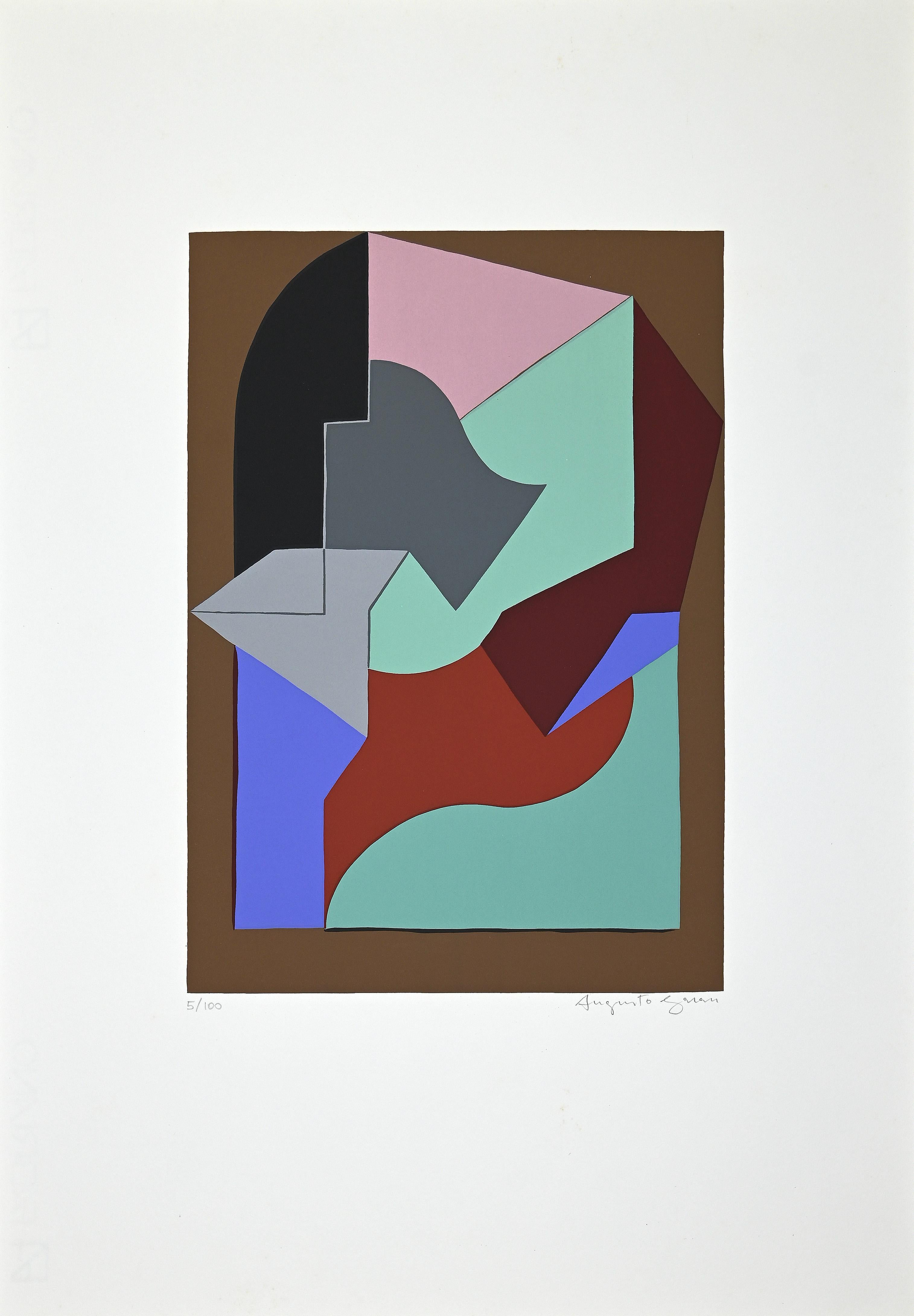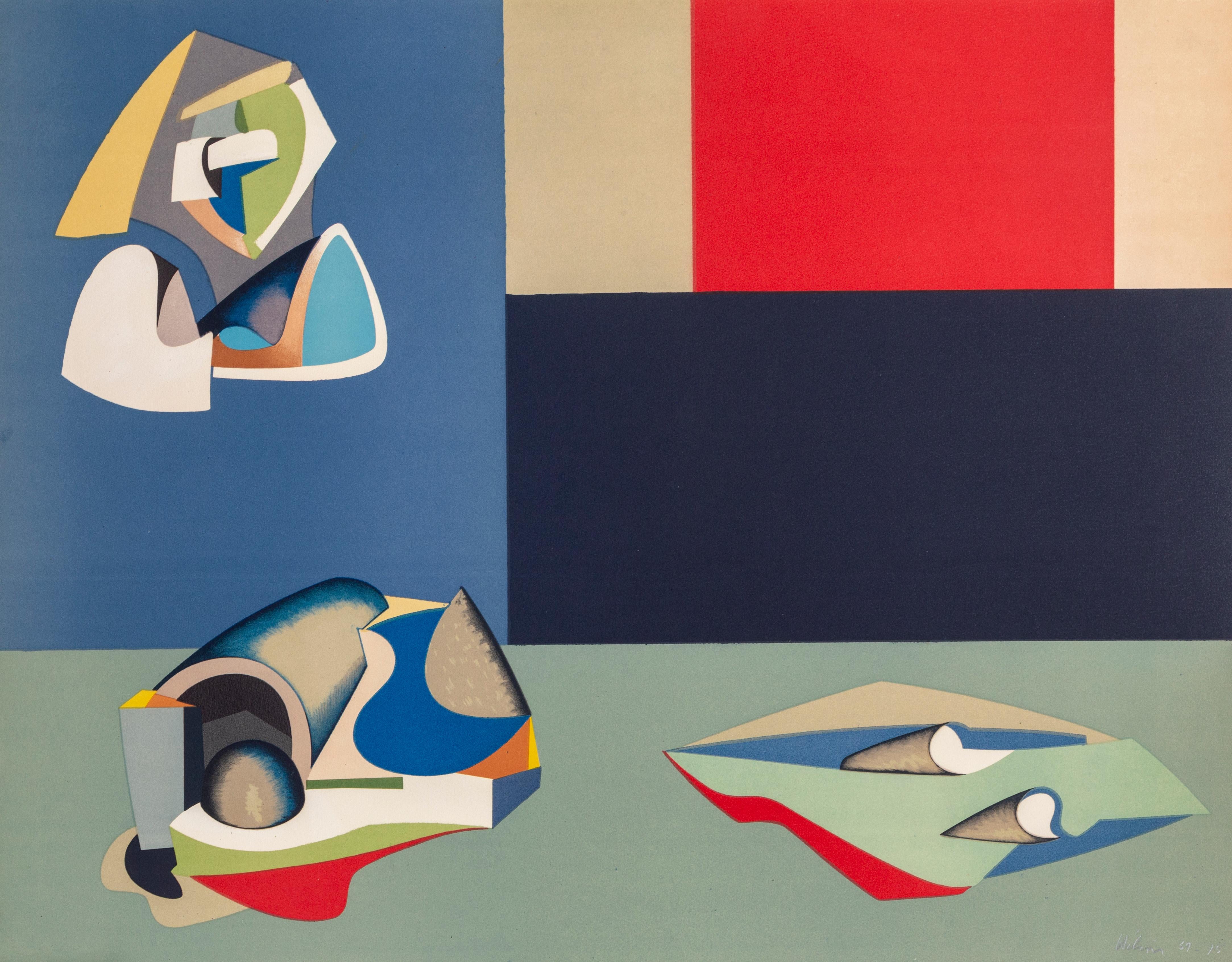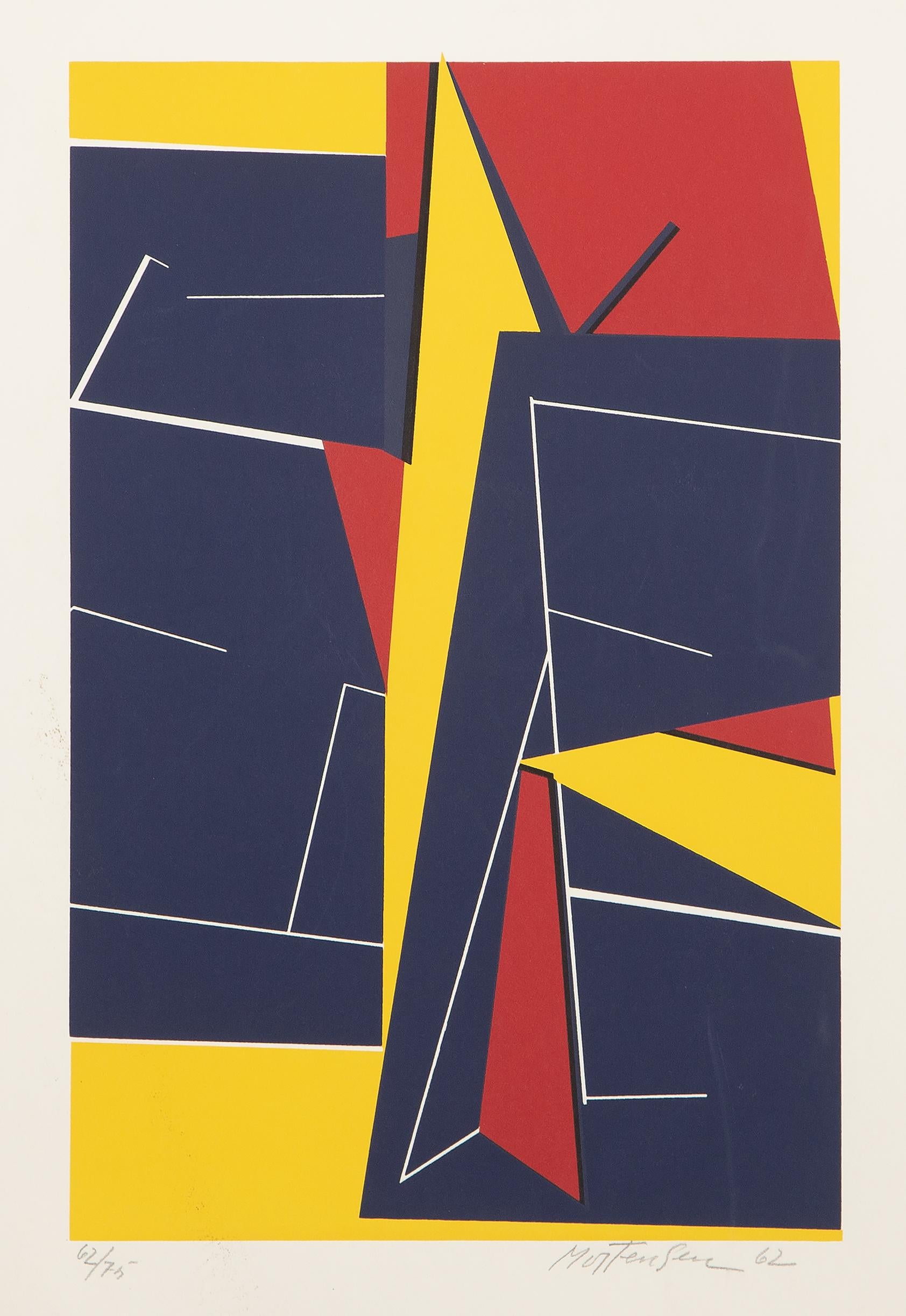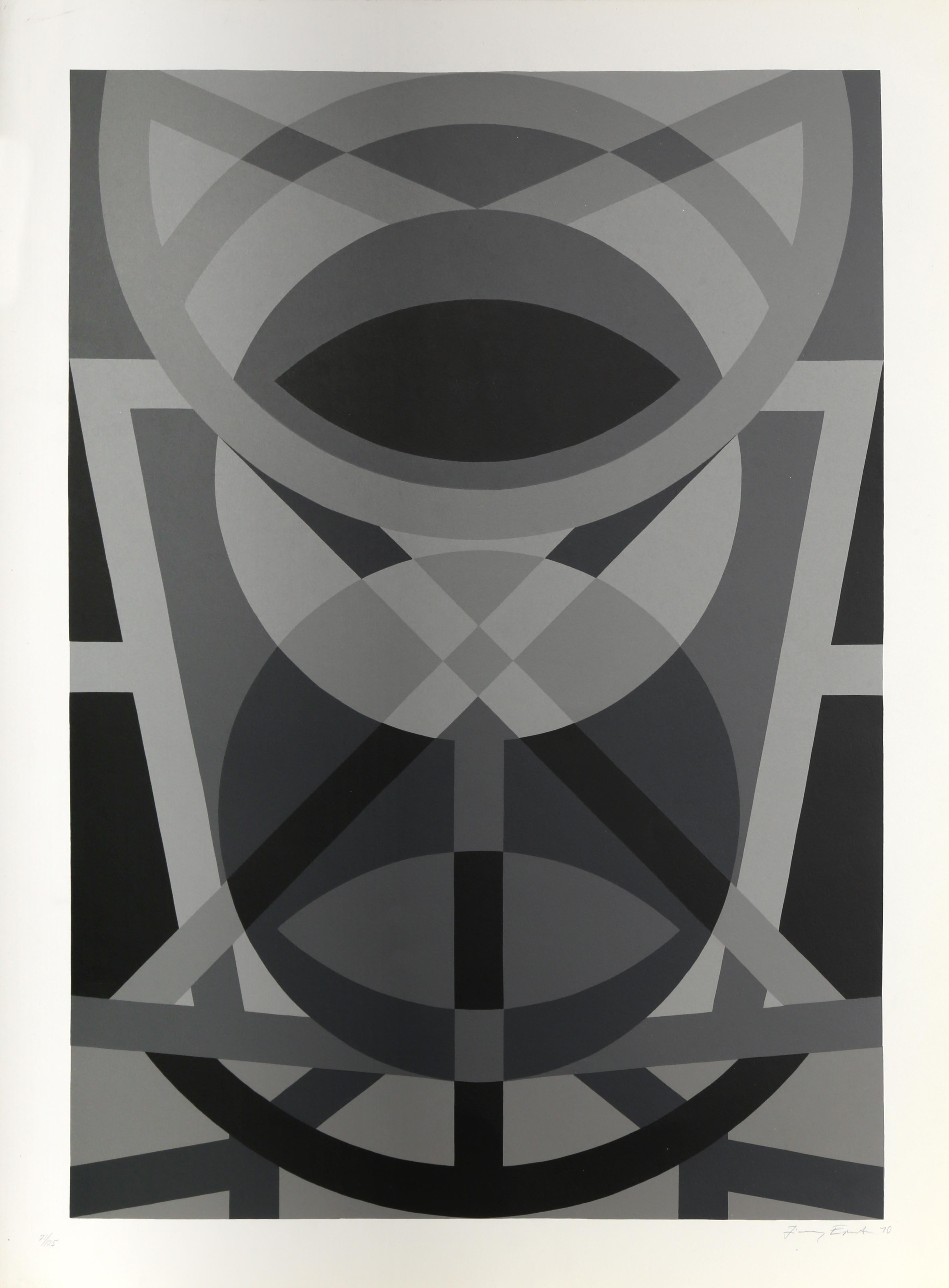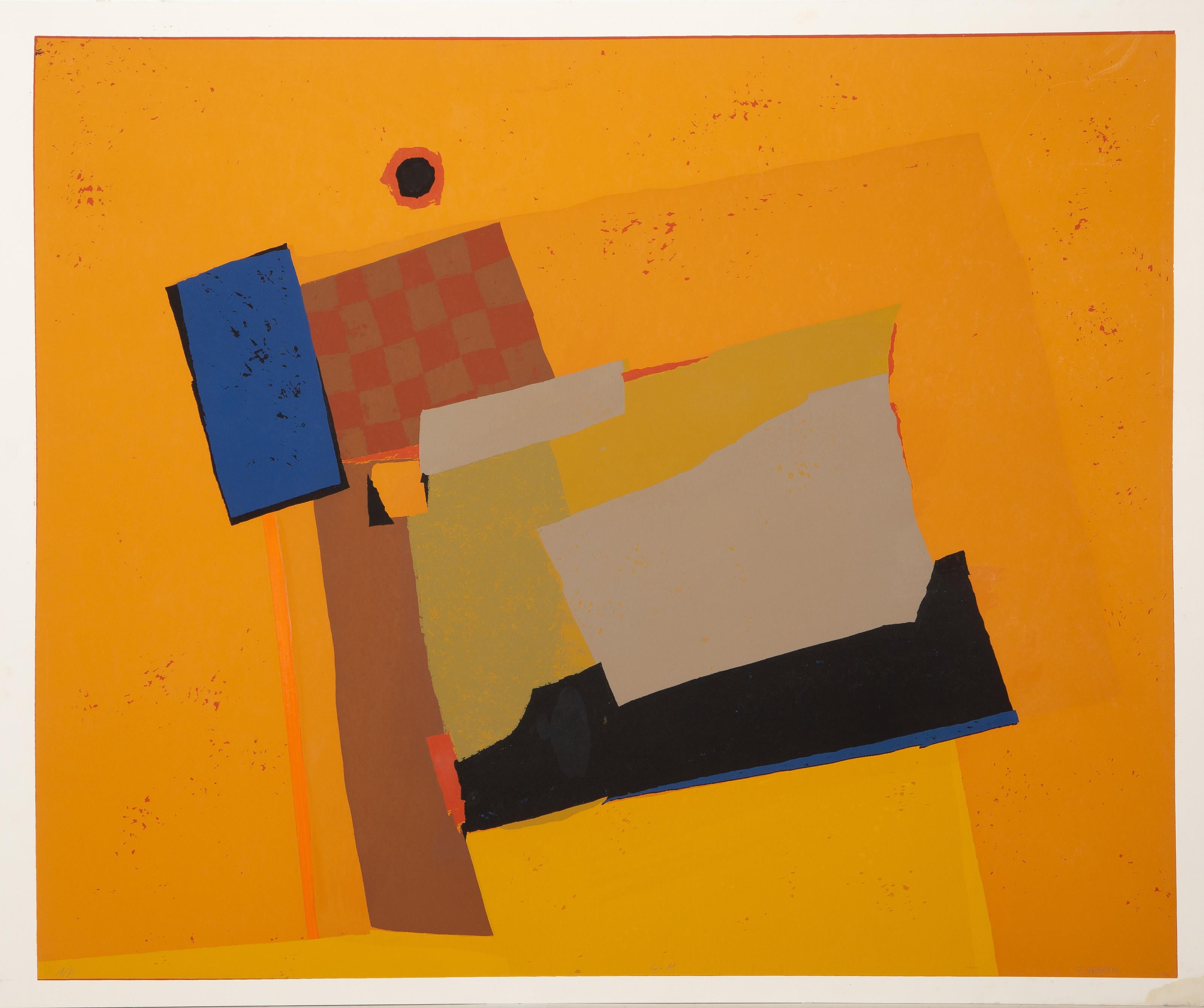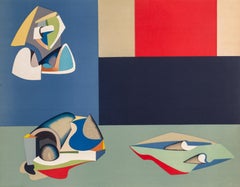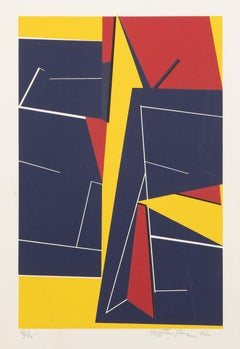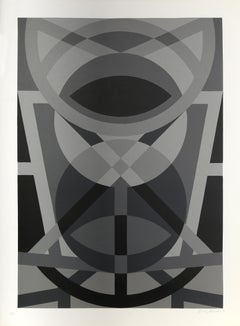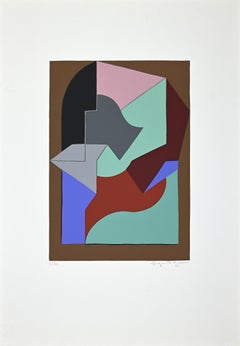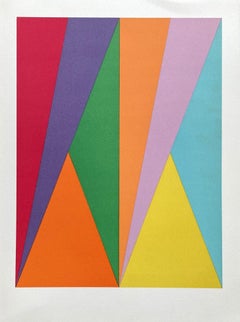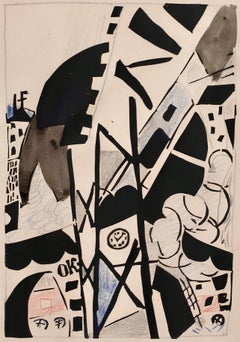Items Similar to First, Cubist Screenprint by Arnold Hoffmann, Jr.
Want more images or videos?
Request additional images or videos from the seller
1 of 8
Arnold Hoffmann, Jr.First, Cubist Screenprint by Arnold Hoffmann, Jr.circa 1970
circa 1970
$800
£606.15
€695.51
CA$1,125.73
A$1,237.49
CHF 650.37
MX$15,027.59
NOK 8,113.15
SEK 7,686.64
DKK 5,190.78
About the Item
Arnold Hoffmann, Jr., American (1915 - 1991) - First, Year: circa 1970, Medium: Screenprint, signed, titled and numbered in pencil, Edition: 16/50, Image Size: 27.25 x 20.75 inches, Size: 30.75 x 25 in. (78.11 x 63.5 cm)
- Creator:Arnold Hoffmann, Jr.
- Creation Year:circa 1970
- Dimensions:Height: 30.75 in (78.11 cm)Width: 25 in (63.5 cm)
- Medium:
- Movement & Style:
- Period:
- Framing:Framing Options Available
- Condition:
- Gallery Location:Long Island City, NY
- Reference Number:Seller: 832461stDibs: LU46615038622
About the Seller
4.9
Platinum Seller
Premium sellers with a 4.7+ rating and 24-hour response times
Established in 1979
1stDibs seller since 2014
3,112 sales on 1stDibs
Typical response time: 1 hour
- ShippingRetrieving quote...Shipping from: Long Island City, NY
- Return Policy
Authenticity Guarantee
In the unlikely event there’s an issue with an item’s authenticity, contact us within 1 year for a full refund. DetailsMoney-Back Guarantee
If your item is not as described, is damaged in transit, or does not arrive, contact us within 7 days for a full refund. Details24-Hour Cancellation
You have a 24-hour grace period in which to reconsider your purchase, with no questions asked.Vetted Professional Sellers
Our world-class sellers must adhere to strict standards for service and quality, maintaining the integrity of our listings.Price-Match Guarantee
If you find that a seller listed the same item for a lower price elsewhere, we’ll match it.Trusted Global Delivery
Our best-in-class carrier network provides specialized shipping options worldwide, including custom delivery.More From This Seller
View AllCubist Composition, Lithograph by Jean Helion
By Jean Hélion
Located in Long Island City, NY
Jean Hélion was a French painter (1904 - 1987) whose abstract work of the 1930's established him as a leading modernist. His mid-career rejection of abstraction was followed by nearl...
Category
1930s Cubist Abstract Prints
Materials
Lithograph
Geometric Abstract by Richard Mortensen 1962
By Richard Mortensen
Located in Long Island City, NY
Artist: Richard Mortensen
Title: Red, Blue and Yellow Composition
Year: 1962
Medium: Screenprint, signed, titled and numbered in pencil
Edition: 62/75
Image Size: 19.75 x 12.75 inche...
Category
1960s Hard-Edge Abstract Prints
Materials
Screen
Plate I, Abstract Geometric Screenprint by Jimmy Ernst
By Jimmy Ernst
Located in Long Island City, NY
Plate I
Jimmy Ernst, American (1920–1984)
Date: 1970
Screenprint, signed and numbered in pencil
Edition of 71/125
Image Size: 33 x 22.5 inches
Size: 37 x 28 in. (93.98 x 71.12 cm)
Category
1970s Abstract Geometric Abstract Prints
Materials
Screen
Untitled I, Abstract Minimalist Screenprint by Robert Einbeck
By Robert Einbeck
Located in Long Island City, NY
Artist: Robert Einbeck, French (1944 - )
Title: Untitled I
Year: circa 1975
Medium: Screenprint on Arches, signed and numbered in pencil
Edition: 150
Image Size: 22 x 26 inches
Size:...
Category
1970s Abstract Geometric Abstract Prints
Materials
Screen
C.M II, Abstract Geometric Screenprint by John Urbain
By John Urbain
Located in Long Island City, NY
John Urbain, Belgian/American (1920 - 2009) - C.M II, Year: circa 1975, Medium: Screenprint and collage, signed, numbered and titled in pencil, Edition: AP, Image Size: 28 x 33.75 in...
Category
1970s Modern Abstract Prints
Materials
Mixed Media, Screen
"CM", Silkscreen with Collage by John Urbain
By John Urbain
Located in Long Island City, NY
Artist: John Urbain, Belgian/American (1920 - 2009)
Title: CM
Year: circa 1975
Medium: Silkscreen with Collage, signed and numbered in pencil
Edition: 20
Image Size: 28 x 34 inches
S...
Category
1970s Abstract Geometric Abstract Prints
Materials
Screen
You May Also Like
Untitled - Screen Print by Augusto Garau - Late 20th Century
By Augusto Garau
Located in Roma, IT
Hand Signed. Edition of 100.
Image Dimensions: 28.2 x 19.8 cm.
Good conditions.
Category
Late 20th Century Abstract Abstract Prints
Materials
Screen
Geometric Composition - Original Lithograph
By Max Bill
Located in Paris, IDF
Max Bill
Geometric composition, 1975
Original lithograph
Unsigned and unnumbered as usual
Limited edition of 575 copies
On Arches vellum, size 35 x 27 cm (c. 14 x 10 in)
Excellent ...
Category
1970s Abstract Geometric Interior Prints
Materials
Lithograph
Pougny, Composition, Pougny, dix linogravures originales, 1914-1920 (after)
By Jean Pougny
Located in Southampton, NY
Linocut on vélin vergé ancien paper. Unsigned and unnumbered, as issued. Good condition. Notes: From the folio, Pougny, dix linogravures originales, 1964. Published by Au Vent d'Arle...
Category
1960s Cubist Abstract Prints
Materials
Linocut
$4,076 Sale Price
20% Off
Free Shipping
Jean Marie Haessle Abstract Geometric Op Art Silkscreen Lithograph Print
By Jean-Marie Haessle
Located in Surfside, FL
Jean Marie Haessle, French-American (1939-)
Serigraph silkscreen
Hand signed in pencil and numbered
Elana's Dream (red background)
1980
Jean Marie Haessle was born in 1939 in Alsa...
Category
1980s Abstract Geometric Abstract Prints
Materials
Lithograph, Screen
Papel collé, Société internationale d'art XXe siècle
By Alberto Magnelli
Located in Southampton, NY
Lithograph, stencil on vélin paper. Paper Size: 12.4 x 9.65 inches. Inscription: Signed in the plate and unnumbered, as issued. Notes: From the album, XXe siècle, Nouvelle série N° 9...
Category
1950s Cubist Still-life Prints
Materials
Lithograph
$796 Sale Price
20% Off
Free Shipping
Untitled (pour XXe Siecle)
By Alberto Magnelli
Located in Fairlawn, OH
Linocut, printed on yellow wove paper
Unsigned as is usual
From: XXe Siecle, Volume 13, 1959
Published by G. San Lazzaro for A. Maeght, Paris
Printed by...
Category
1950s Abstract Geometric Abstract Prints
Materials
Linocut
More Ways To Browse
Pierre Gaillardot
Quelques Fleurs Pour Des Amis
Rauschenberg Collage
Robert Barry
Robert Fisher
Robert Indiana Two
Robert Motherwell Africa
Robert Motherwell Octavio Paz
Roy Lichtenstein Plate
Ruth Alexander
Sam Francis Monotype
Steinberg Print Signed
Stephen Powers
Terry Rodgers
Tightrope Walker Vintage
Tom Levine
Vintage Sun And Moon Art
Voulkos Monotypes
